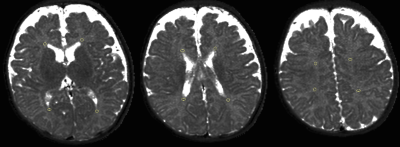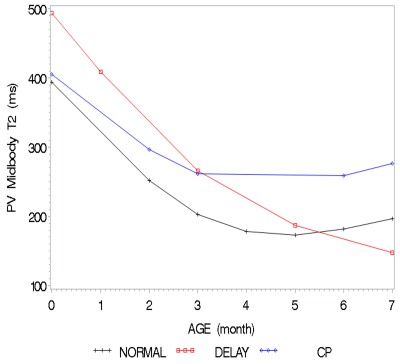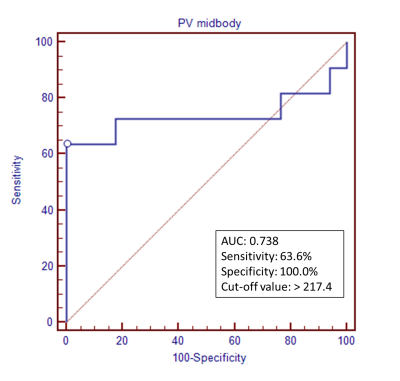1770
T2 relaxometry MRI predicts cerebral palsy in preterm infantsYi-Shan Tsai1, Li-Wen Chen2, and Feng-Mao Chiu3
1Department of Diagnostic Radiology, National Cheng Kung University Hospital, College of Medicine, National Cheng Kung University, Tainan, Taiwan, 2Departments of Pediatrics, National Cheng Kung University Hospital, College of Medicine, National Cheng Kung University, Tainan, Taiwan, 3Clinical MR application, Philips Healthcare, Taipei, Taiwan
Synopsis
T2 relaxometry brain MRI could be of prognostic value in preterm infants. The maturation patterns of periventricular white matter differed according to neurodevelopmental outcomes. T2 relaxation values over mid-body periventricular white matter at > 1 month old of corrected age could predict CP. T2 relaxometry brain MRI provides neuroimaging-outcome correlation among preterm infants, especially when interpreted with age-specific and area-selective considerations.
E-Poster (Electronic poster)
Acknowledgements
We would like to thank Mr. Feng-Mao Chiu, the clinical MR application specialist of Philips Healthcare, for the support of simulation model in T2 estimation accuracy.References
1. Back SA. Brain Injury in the Preterm Infant: New Horizons for Pathogenesis and Prevention. Pediatr Neurol 2015;53:185-92 2. He L, Parikh NA. Atlas-guided quantification of white matter signal abnormalities on term-equivalent age MRI in very preterm infants: findings predict language and cognitive development at two years of age. PLoS One 2013;8:e85475Figures

Figure 1. Manually drawn periventricular white matter
on three axial sections through frontal horns, mid-body of lateral ventricles,
and centrum semiovale. A circular ROI area is 5-8mm2.
The four T2-mapping values
of each section are averaged for calculation.

Figure 2. Demographic data of birth history, birth condition and T2 relaxometry
values at three different sections of periventricular white matter

Figure 3. Restricted cubic spline
regression analysis of T2 relaxometry versus age over mid-body periventricular
white matter. T2 quantification
values in relation to age are curvilinear, linear, and flat among normal
development (black line), delayed development (red line), and cerebral palsy
(blue line) preterm infants respectively.

Figure 4. Receiver operating characteristic (ROC) curves of
T2 relaxometry on the sections
through mid-body
of lateral ventricles.

Figure 5. T2 relaxation values versus age among normal development, delayed
development without cerebral palsy, and cerebral palsy patients. T2
quantification over periventricular white matter declines with age.
Periventricular white matter through sections of (A) Frontal horns of lateral
ventricles (B) Mid-body of lateral ventricles, and (C) Centrum semiovale. (CP:
cerebral palsy; DD: delayed development (without cerebral palsy); PV:
periventricular)